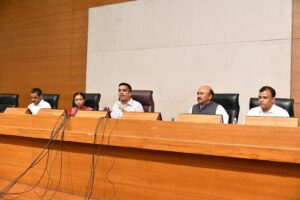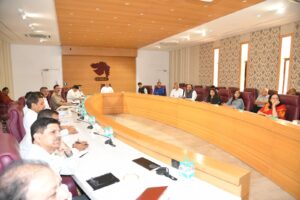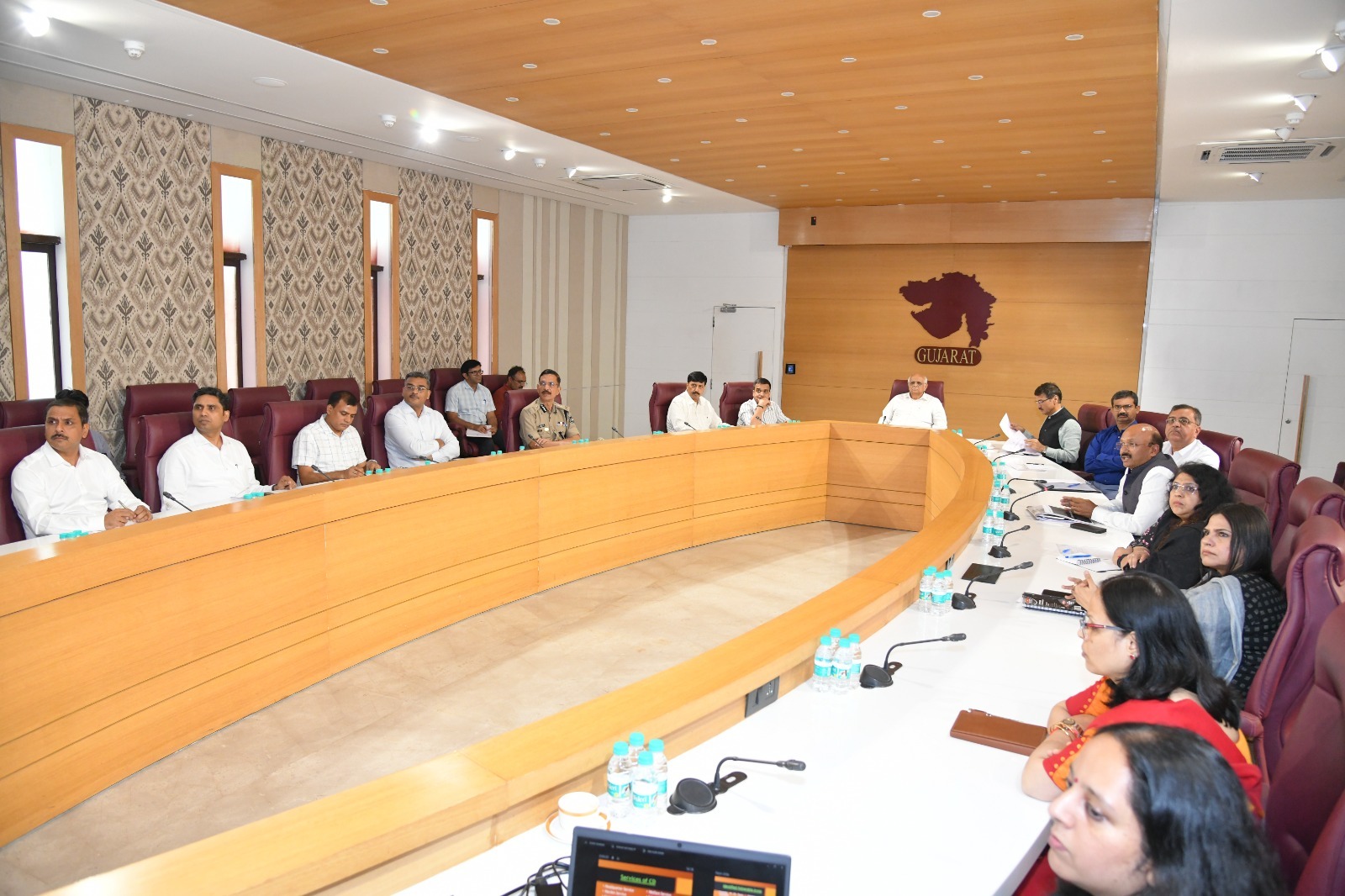~Minister of State for Home Shri Harsh Sanghavi Provides Detailed Information on Upcoming Mock Drill
Gandhinagar, Gujarat, 06 May, Gujarat Chief Minister Bhupendra Patel today Reviews Preparations for the State-Wide Civil Defence Mock Drill Scheduled on 7th May 2025 in Gujarat.
Government sources said, The Ministry of Home Affairs, Government of India, has directed all states to conduct a Civil Defence Mock Drill on 7th May 2025. Aligning with this, Shri Bhupendra Patel chaired a video conference on 6th May 2025 to review the state’s preparedness, in the presence of Minister of State for Home Harsh Sanghavi, Chief Secretary Pankaj Joshi, ACS Home M. K. Das, and DGP Vikas Sahay, along with senior officials from all districts. Preparations of key departments such as GEB, Fire, Forest, PWD, Medical, Home Guard, Revenue, Collector and Police Departments, and Municipal Corporations are thoroughly reviewed during the conference.
After the meeting, Minister of State for Home Shri Harsh Sanghavi briefed the media on public safety measures for the mock drill and mentioned that in such situations, do the following:
– In the event of a warning, citizens should remain alert and be aware of two types of sirens: (1) A long siren indicates a warning signal, suggesting a possible air strike. (2) A short, steady siren indicates an all-clear signal, meaning the threat has passed.
– During any emergency, immediately stop all outdoor activities and help senior citizens, children, and disabled persons. Avoid using elevators and opt for stairways while evacuating.
– On 7 May 2025, a blackout will be observed in various districts of the state from 7:30 pm to 8:00 pm. During this time, ensure all lights in homes, offices, and vehicles are switched off or properly covered. Use blackout curtains or thick fabric to block any light from being visible outside. Avoid using mobile phones or flashlights near windows.
– Adhere strictly to instructions issued by the civil defence authorities through radio or public announcements. Avoid circulating rumours or unverified information, and help neighbours who may be unfamiliar with emergency protocols.
Shri Harsh Sanghavi urged all citizens that this mock drill is intended solely as a preparedness exercise and a means of raising alertness. There is no need to feel scared or panicked. The drills will be conducted in 18 districts, including Ahmedabad, Gandhinagar, Vadodara, Bharuch (Ankleshwar), Tapi (Kakrapar), Surat, Bhavnagar, Jamnagar, Devbhumi Dwarka (Okha, Vadinar), Kutch-East (Gandhidham), Kutch-West (Bhuj, Naliya), Patan, Banaskantha, Gir Somnath, Mehsana, Navsari, Narmada, Dang, and Morbi.
Shri Harsh Sanghavi outlined the step-by-step procedure for the mock drill:
– As per the Civil Defence guidelines, 12 different services will actively participate, including trained wardens and volunteers from Civil Defence.
– The Indian Air Force will communicate secret messages to the Civil Defence through a secure hotline.
– Civil Defence personnel and informed citizens will act as first responders.
– Citizens aware of Civil Defence protocols will send SMS alerts to inform others about airstrike warnings.
– Firefighters will assist with evacuating citizens from affected areas, while medical teams will provide immediate treatment on-site.
– The Public Works Department (PWD) will aid in clearing debris and securing dilapidated buildings.
– The Forest Department will coordinate the evacuation of animals from conflict zones.
– Home Guards will support the police in maintaining law and order.
– Revenue officers will supervise the process and ensure proper coordination.
– The entire operation will be carried out under the supervision of the District Collector.
– The police department will ensure the maintenance of law and order throughout the situation.
– The general public, including students, will receive training on raising awareness, with guidance from Civil Defence, SDRF, and SRP.
– Village Sarpanches will be provided with clear instructions on their responsibilities.
It is important to note that, following the Chinese invasion in 1962, the Indian government established the Civil Defence system in 1963, similar to many other nations. The goal was to save lives and property during wartime, maintain public morale, safeguard against misinformation, and ensure the uninterrupted flow of industrial production and supplies. Over time, the scope of Civil Defence activities has broadened. In times of peace, Civil Defence personnel, along with honorary officers and volunteers, are instrumental in responding to natural disasters such as floods, earthquakes, and storms, as well as man-made crises like communal riots, major fires, and accidents. These officers and volunteers are always present at the scene, carrying out vital public service duties.

